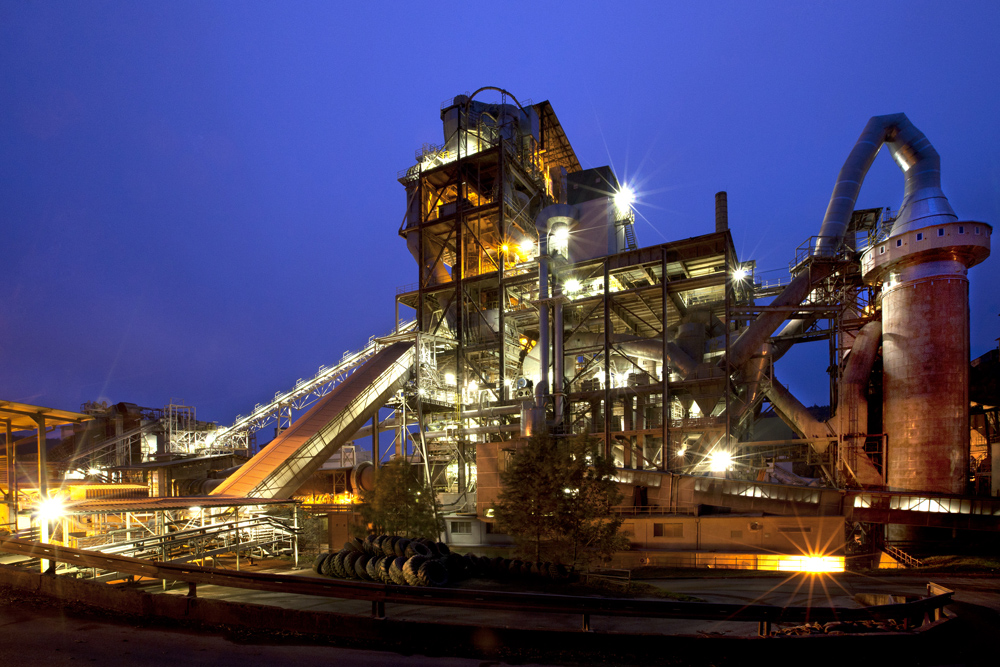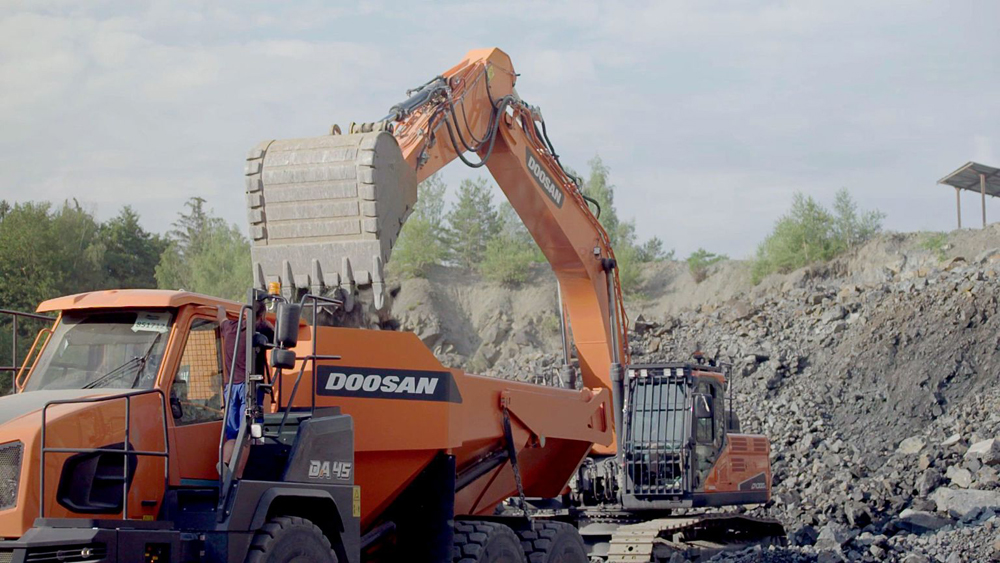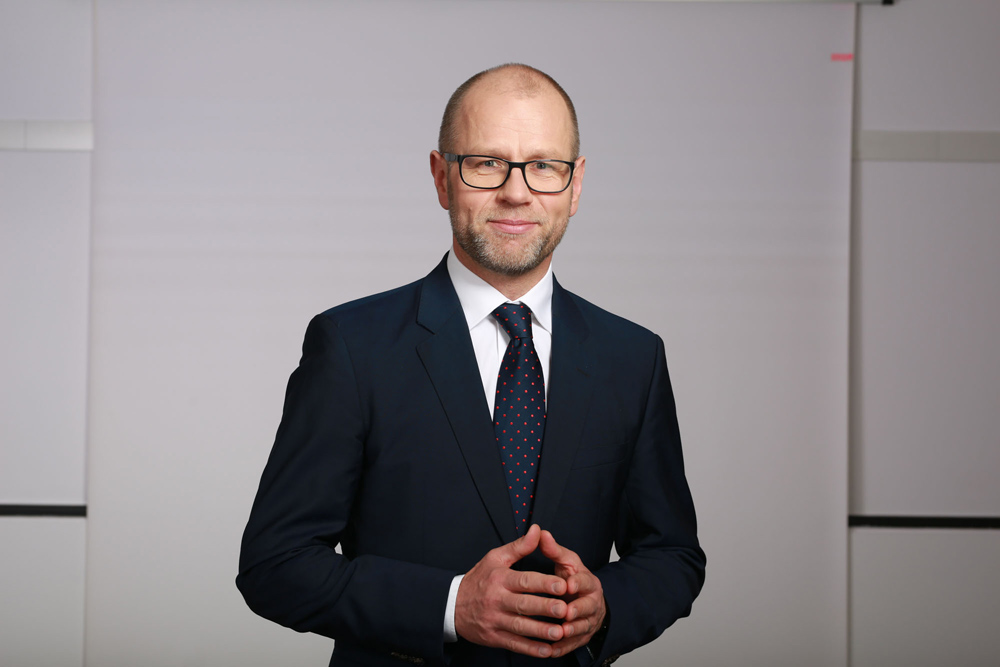
Given its vast size, it is no surprise that Russia is Europe’s biggest national aggregates producer. In 2018 alone, the country produced 736 million tonnes – more than 20% of the 3.07 billion tonnes produced by all the then 28 EU and four EFTA (European Free Trade Association) member countries, according to an estimate by the UEPG (European Aggregates Association).

As this magazine reported in its last issue, the coming months will likely see a significant realignment of the Russian aggregates industry due to the impact of the COVID-19 pandemic. Some smaller local aggregates supply firms will probably cease trading, with larger but no longer profitable companies becoming prime targets for acquisition by ambitious rivals. As such, surviving larger local and regional producers can expect to gain increased market share when the economy picks up, and pent-up aggregates demand returns.
GlobalData’s August 2020-published 47-page report Construction in Russia – Key Trends & Opportunities to 2024, notes how Russia’s construction industry has been severely affected by the coronavirus.
The report states: “In the short term, construction activities in the country will be impacted by the restrictions imposed by the government to contain the spread of the disease. Downside risks for the construction industry not only include the worsening of the outbreak but also declining oil prices. Major public-funded construction projects could be delayed or cancelled, as government revenues in the coming months will be affected by the fall in oil prices.”

While 42.2% of Russian mega-infrastructure projects in the pipeline are in the execution stage, GlobalData believes the prospects for progressing with the works remain uncertain, as the country’s fiscal position will be weakened by government’s expansionary fiscal-policy stance and the reduction in oil and gas revenues.
In mid-May, the Russian finance minister, Anton Siluanov, said that the country’s revenues from oil and gas would be RUB3trillion (US$39.5bn) lower than previous estimates, due to weaker oil prices. However, the government plans to use reserves from the National Wealth Fund to finance its budget deficit. Before the COVID-19 crisis, the government had outlined plans last year to spend RUB 6.3 trillion (US$96bn) on the development of the country’s transport infrastructure during the period of 2019-2024.
Due to pandemic upheaval, coupled with the weak outlook for economic growth, GlobalData tips the Russian construction industry to shrink by 4.2% in 2020. The same source predicts the industry will recover: however, posting an average annual growth of 2.6% between 2021-2024. That is good news for the nation’s estimated 1,180 aggregate producers/companies that operate across a total of 1,485 extraction sites.
In neighbouring Ukraine, the director of the country’s cement producers’ association says the Big Construction programme for road and bridge building and other national infrastructure projects gives hope for growth in the country’s cement market.

Ukrcement director Roman Skilsky added that the national programme would mean a noticeable increase in demand for cement, allowing domestic producers to increase the number of idle reserve capacities.
In an interview with Interfax-Ukraine, Skilsky said that in early August this year the Shulgin State Road Research Institute and the Automobile Roads Agency of Ukraine (Ukravtodor) presented a concept and programme for the construction of cement concrete roads in Ukraine, which envisages an increase in the number of such roads from 1% to 5% in the next five years.
The programme features proposals for the construction of bridges, road infrastructure, airfields, river locks, railway modernisation, and road safety initiatives.
Skilsky said the process of approval of the documents for the programme by the relevant central executive authorities is underway.
He added that the Ukraine cement sector is not growing and has been fluctuating between 9.2-9.5 million tonnes for the third year in a row. Ukrainian producers feature four large industrial groups, two of which operate internationally.
“The cement industry can increase production further. The capacity reserve is sufficient for at least 20% growth,” said Skilsky. “The question is whether there is a market for such growth.”
He said that at the beginning of 2020, there was hope for a similar growth level to the 20% expansion that the construction market showed in 2019. However, the impact of the COVID-19 pandemic saw a 4.6% decline in construction in the first seven months of the year, including a 22% fall in housing construction. There was a slight increase in infrastructure construction, said Skilsky.
Poland is also among Eastern Europe’s biggest aggregates producers and consumers. Lafarge began operating in Poland in 1995. Currently, Poland’s second-largest cement producer, the company has around 50 facilities in the country. These include 30 concrete-production sites, 14 active quarries, two large cement plants, a marine import terminal and three rail sidings, the latter connecting quarries with building materials supply to major Polish cities. Employing around 1,500 staff in Poland plus a significant number of contractors and their employees, Lafarge has a 21.8% market share of the Polish cement market. The firm also has a 10-12% share of the national aggregates market and an 8% share of Polish concrete product sales.

Aggregates Business visited Lafarge’s giant Kujawy Quarry near Inowrocław, north-central Poland, in February this year, and, during our visit, interviewed Krzysztof Suchorz, director-general for the aggregate product line for Lafarge in Poland. The country produces around 320 million tonnes of aggregates each year.
At that time, Suchorz said Poland had seen stable growth over the last two years leading to a 4% rise in GDP (gross domestic product) in both years. He said this had led to the continued expansion of residential, commercial and infrastructure development, creating healthy national building materials demand.
In early November 2020, Suchorz gave an update on the impact of COVID-19 on the Polish building materials sector.
“As the uncertainty concerning the spread of the coronavirus epidemic is mounting, it is difficult to estimate its impact on the overall economy. Nonetheless, in Poland, we will certainly see a discernible impact on economic growth, especially in Q4 2020 and Q1 2021. The construction industry will react with a delay, which adds to the uncertainty clouding our sector. As many investments currently being carried out were contracted before the pandemic hit, the beginning of the next year may prove to be critical.
“Much will depend on the supply of procurements, especially from the public sector. In private investments, we can expect a tangible decline whereas in public ones a possible delay and postponements of contracting. The Polish government is committed to keeping the current pace of infrastructural construction which bodes well for the sector’s business cycle. This will help companies rebuild their contract portfolios and improve their financial liquidity, which is especially important for smaller businesses and subcontractors.”
Suchorz expects steady demand for cement in Poland, which currently hovers in the vicinity of 18 million tonnes. “The demand may increase in the following years and stabilise at the level above 18 million tonnes. The same goes for aggregates. This year’s overall extraction of aggregates (including crushed stone mineral aggregate and gravel) will shrink around 7-10% versus last year. We can expect a similar decrease next year.”
Lafarge in Poland has done everything to keep the business operations and the servicing of customers going, says Suchorz. He continues: “We have restricted possible infections among our staff, subcontractors and clients. That is why we have separated teams working on different shifts and decreased the number of employees on prolonged shifts. We have restricted direct contact with our clients. Wherever possible, we have switched to remote work. Our safety standards, already extremely high for years, were additionally strengthened to comply with the guidelines of sanitary authorities and thus keep the risk of infection at minimal levels. Many of the restrictions and safety procedures were implemented before the lockdown was officially announced.”
The Czech Republic’s 170-plus aggregate companies/producers produce around 60 million tonnes a year for customers, including many within the country’s construction sector.
Before the COVID-19 outbreak, GlobalData notes that the construction industry in the Czech Republic was struggling, with output declining by 2.4% in real terms in 2019, owing to weakness in both building and civil engineering works. In December 2019, the country’s president, Miloš Zeman, warned about the slow pace of construction in housing and transport infrastructure projects in the country.
The COVID-19 outbreak and associated containment measures have further impacted the industry. According to the Czech Statistical Office (CZSO), the country’s seasonally adjusted average construction production index fell by 0.6% year-on-year in the first five months of 2020. Although building construction activities declined during that period, civil engineering works maintained strong growth. The industry’s growth will also be affected by the falling business confidence, with the average business confidence index in the construction industry falling from 127.5 in the first half of 2019 to 111.3 in the first half of 2020, according to the CZSO.
GlobalData’s Construction in Czech Republic – Key Trends and Opportunities to 2024 report, published in August this year, states: “The [Czech] government expects the outbreak of the pandemic to negatively affect the revenues of the municipalities, thereby weighing on their investment activities. To revive the economy by boosting investments and supporting jobs, in July 2020, the Chamber of Deputies, the lower house of the Czech Parliament, approved a proposal to increase the state budget deficit for 2020 to CZK500bn (US$22.1bn) – sharply up from the CZK40bn (US$1.8bn) previously planned in February 2020. Through this, the government plans to support the municipalities and regions by contributing to the repair of roads and increasing the amount of funds made available for investments by the State Transport Infrastructure Fund. This will provide some boost to the construction industry in the short and medium-term.
“Reflecting the disruptions caused by the pandemic coupled with the weak outlook for economic growth, GlobalData forecasts the construction industry to contract by 2.2% in 2020. Over the remaining part of the forecast period, output is expected to register an average annual growth rate of 2.4% between 2021-2024.”
Fast Cargo is a family company based in Prˇ eštice near Pilsen in the Czech Republic, offering services in recycling, demolition and the sale and extraction of construction aggregates. The last of these areas is an important part of the business and takes place at the company’s Mítov quarry, where Fast Cargo has reported a great return on investment from a new Doosan DX300LC-5 30-tonne crawler excavator added to the machinery fleet at the quarry.
There are substantial demands on machinery at the Mítov quarry with over 150,000 tonnes of stone extracted annually, and 900 tonnes of materials moved every day. After the previous excavator broke down irreparably, around five brands were shortlisted for the competitive tender to replace this machine and the contest was won by the DX300LC-5 supplied by GARNEA, the authorised dealer for the Doosan range in the Czech Republic. According to Fast Cargo, the Doosan DX300LC-5 has provided the higher capacity and efficiency the company was hoping for from a new 30-tonne excavator.
With the coordination of the group’s Innovation Centre in Lyon, France, LafargeHolcim, the world’s biggest building material supplier, is participating in an ambitious three-year project funded by the European Union to support the development of low-carbon energy and industry in Eastern and Southern Europe.
Work began on STRATEGY CCUS in May 2019, and the project will run until April 2022.
Scientists from ten European countries are working together to speed the development of carbon-capture, utilisation and storage (CCUS) technology, which will deliver significant cuts in emissions from industrial and power sectors.
STRATEGY CCUS focuses on eight regions identified as promising for CCUS development. It aims to encourage and support initiatives within each region by producing local development plans and business models tailored to industry needs.
German building materials giant HeidelbergCement’s Northern & Eastern Europe-Central Asia Group business area (HC N&EE-CA) includes Russia, Poland, Czech Republic, Romania, Bulgaria, Slovakia, Hungary and the Baltic States (Latvia, Lithuania & Estonia).
In a challenging environment due to the coronavirus pandemic, the group’s January-June 2020 and Q2 2020 sales of cement and aggregates, in particular, held up well - with €10.9mn of cement sales in H1 2020 (-2.7% from €11.2mn in H1 2019); €21.9mn of aggregate sales (+0.4% from €21.8mn); and €2.8mn of ready-mixed concrete (-10% from €3.2mn).
In Q3 2020, HC N&EE-CA business area posted cement sales of €6.3mn (-6.5% from €6.8mn in Q2 2019); €12.9mn of aggregate sales (-4.2% from €13.5mn); and €1.6mn of ready-mixed concrete (-14% from €1.8mn).
Hungary’s close to 400 aggregate producers/companies are estimated by the UEPG to have produced 69 million tonnes of aggregates in 2018.
In the South Transdanubia region of Hungary, not far from the Croatian border, the Beremend factory of Duna Dráva Cement Kft. (DDC), a subsidiary of HeidelbergCement is this year celebrating its 110th anniversary of cement production. While respecting traditions, the production of cement in Beremend is also characterised today by ‘Industry 4.0’ solutions, innovations, continuous developments and world-class technology.
DDC’s harmonious cooperation with its environment, its pursuit of sustainability and its environmental protection solutions have seen the site awarded numerous prizes. The latest is the award won at this year’s ‘Factory of the Year’ competition run by GyártásTrend magazine and PPH media. The award’s jury recognised the Beremend factory with the first prize in the category Industry 4.0.
A couple of leading quarrying and road construction equipment manufacturers have been adding to their commercial footprint in two of Eastern Europe’s other significant national aggregates markets.
Three Romanian companies have invested in asphalt mixing plants from Benninghoven to develop the country’s long-distance road network.
The ECO and TBA mixing plants are operating at different locations in the country.
Germany-based Benninghoven says that Romania’s long-distance roads need rehabilitation, even though at just 750 kilometres, the network is comparatively small. The country, which produces around 90 million tonnes of aggregates per annum, has set itself the goal of catching up with the rest of Europe in terms of transport infrastructure development. Overall, the aim is to extend Romania’s motorways to a total length of 2,710km. An impressive 223km is currently under construction.
In the west of Romania, SDM Timisoara replaced an existing asphalt mixing plant. SDM requires asphalt primarily for rehabilitation projects in and around Timisoara. The decision in terms of plant technology was eventually made in favour of an ECO 2000 transportable asphalt mixing plant in a container design.
Another ECO 2000 transportable asphalt mixing plant in a container design was also recently commissioned in the north of Romania to replace an old plant.
A third Benninghoven mixing plant, a TBA 2000, has recently started producing high-quality asphalt in Blejoi, about 50km north of the capital Bucharest.
GlobalData reports that the Romanian construction industry expanded by 17.3% in real terms in 2019, driven by public and private sector investments in both building and civil engineering works. Even before the coronavirus (COVID-19) outbreak, the country’s construction industry remained strong, with residential and infrastructure sectors supporting the industry through huge projects.

Reflecting the disruptions caused by the pandemic, coupled with the weak outlook for economic growth, GlobalData forecasts construction industry growth to decelerate to 3.3% in real terms in 2020 and tips it to grow at an annual average rate of 3.7% between 2021-2024. Growth in the sector will be supported by the government’s focus on developing the country’s infrastructure. In July 2020, the government published the National Plan for Investment and Economic Recovery. Under this new model of sustainable development, the government plans to spend RON485.4bn (US$115.6bn) to revive economic growth during the 2020-2025 period.
Crushing, screening and conveying equipment manufacturer Terex Finlay has appointed Sigma Bulgaria as an authorised sales, service, parts and rental provider in Bulgaria.
Sigma is a member of the Saracakis Group of companies, a multinational group with a history of 100 years in the Balkan region. It is a full-service heavy-equipment dealership that delivers exceptional service to customers in the building, construction, quarrying, aggregates and recycling market.
The company now offers its customers the full range of Terex Finlay crushing, screening and conveying equipment. Sigma will also provide genuine spare parts and support services to the existing population of Terex Finlay machines in the market with immediate effect.
A nation that produces around 35 million tonnes of aggregates a year, GlobalData expects the Bulgarian construction industry to contract by 2.1% in 2020, with the high likelihood of downward revision in the short-term if works are more severely disrupted than currently anticipated.
Overall, the Eastern European aggregates sector is set for some short-term pain. But longer-term prospects, perhaps with new industry players replacing uncompetitive others, remain encouraging.








